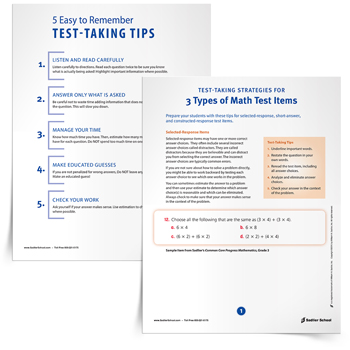March 10, 2016 other-test–taking-strategies
Trends in Math Assessment: Math Multiple-Response Items
By: Jeff Todd
High stakes testing is a hot topic these days, and as teachers we must be prepared to help our students do well on these tests. As I’m sure everyone knows by know, new state assessments employ different question types to assess students’ mathematical understanding. One such question type is selected-response items with more than one correct answer choice.
Math multiple response items also known as multi-select items are not like what we got on tests when we were in school! These items are common on the new PARCC and SBAC assessments, but they are showing up on other state standardized tests as well.
On these items, students must choose all correct responses. Usually there are six choices and anywhere from two to four of the options will be correct. One strategy, which hadn’t occurred to me until I did some research on this topic, is to have students think about these items as a series of true/false questions. In other words, have students determine whether each response is true or false on its own.
I want to share with you the types math multiple response items that show up on standardized tests at the different grade levels, Grades 3–8. The download for this post gives you some tips for the different question formats students might encounter on new standardized tests.
Grade 3: Here is an example of the math multiple response items for third grade. Notice that the stem, the question, specifies that there are three correct answers. For the items I have seen, this seems to be the pattern at the lower grades—to specify the number of correct responses to expect.
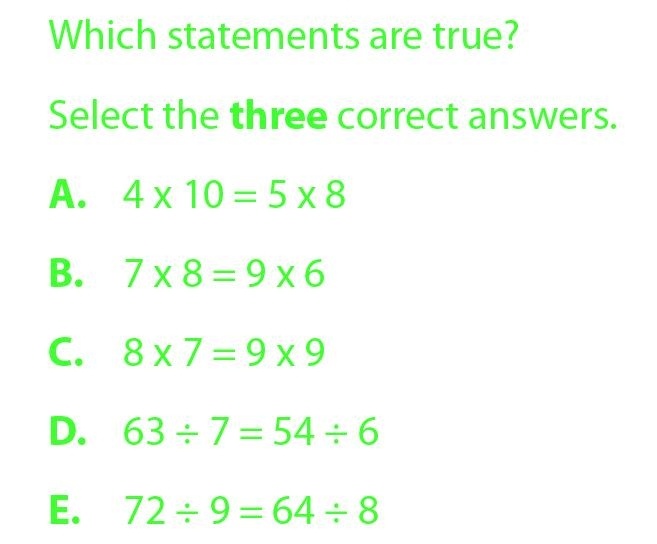
Answer: A, D, E
Grade 4. Looking at the fourth grade math multiple response questions, we see a similar item stem specifying the number of correct answers.
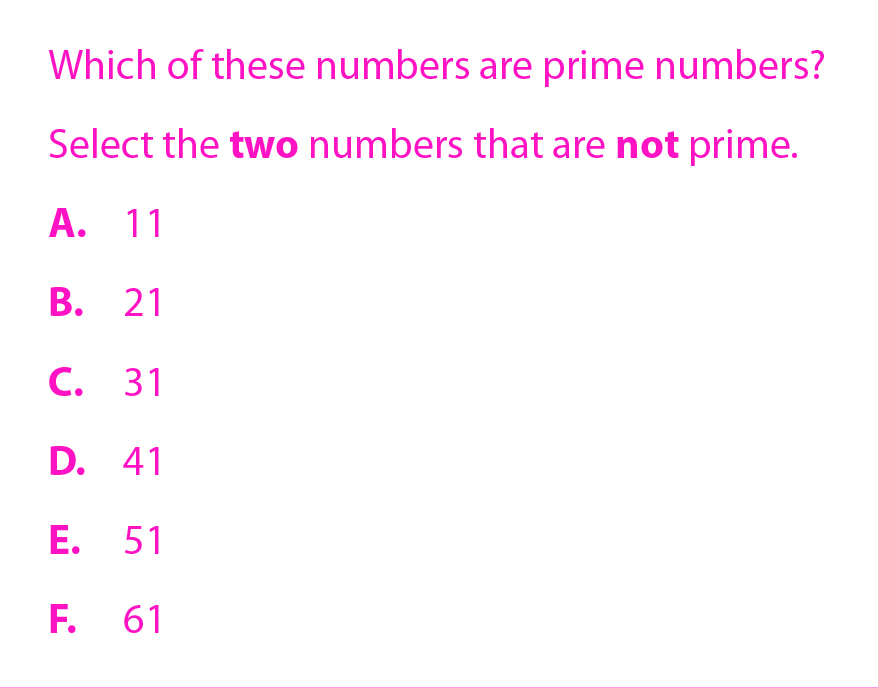
Answer: B, E
Grade 5. For the fifth grade math multiple response items, I noticed that a higher level of reading and abstract reasoning is assumed. Also in this question, the response choices are words rather than numbers.
One student drew a rectangle that is not a square. Another student drew a parallelogram that was not a rectangle.
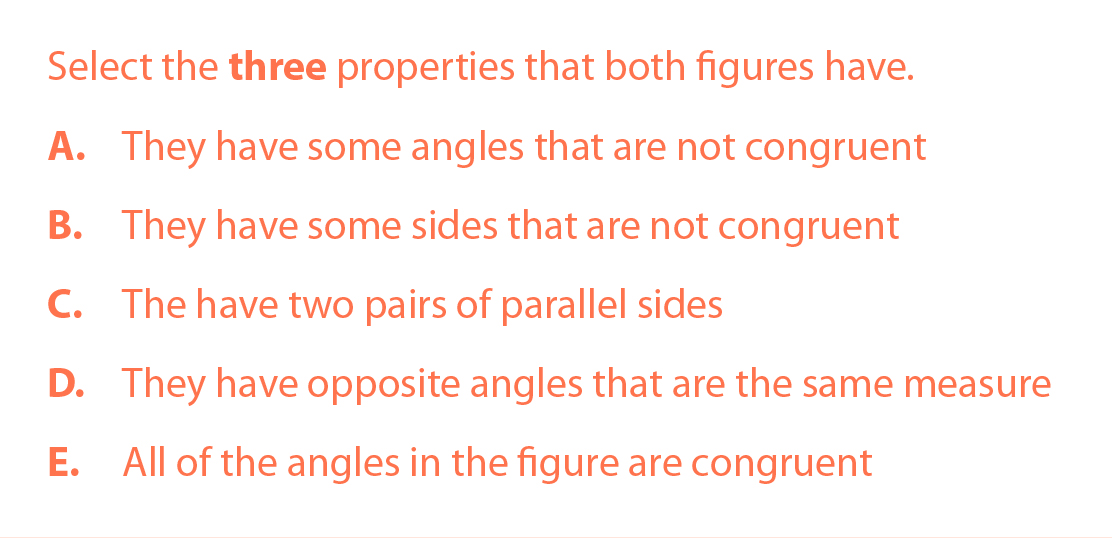
Answer: B, C, D
Grade 6: What is different about this math multiple response question from sixth grade is that the correct number of responses is not indicated. I did not see this in any of the items in the earlier grades.
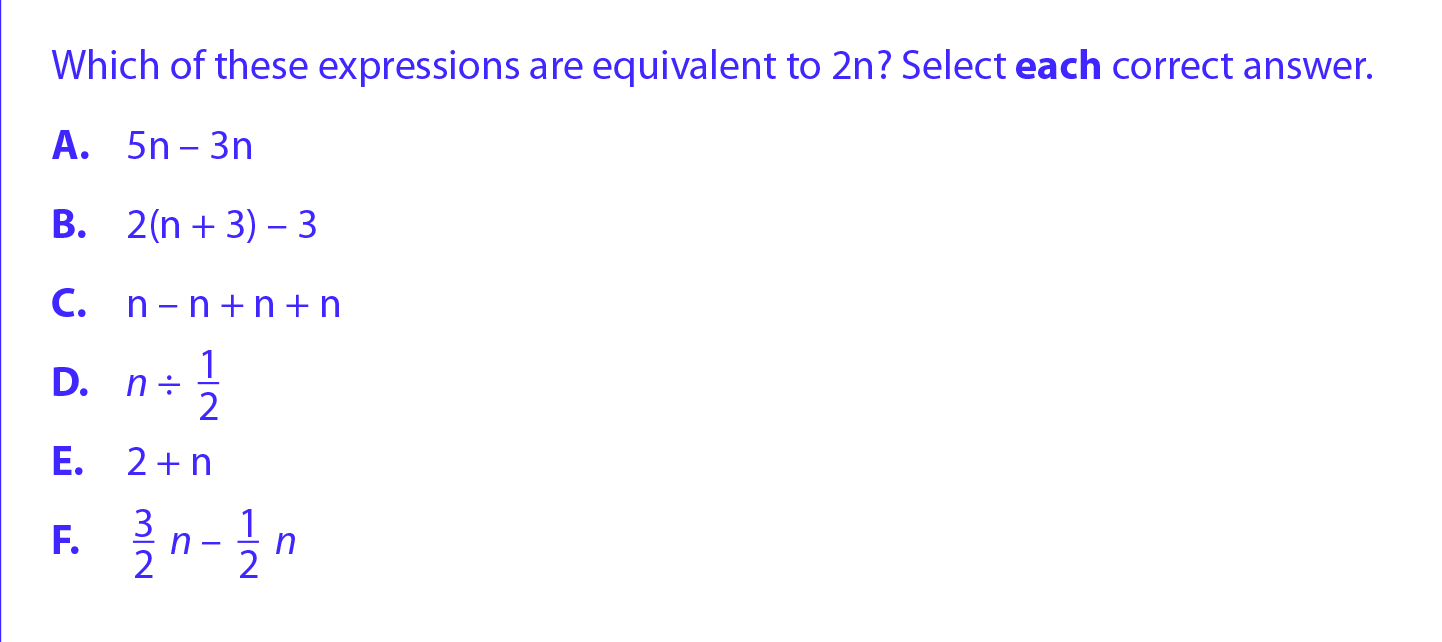
Answer: A, C, D
Grade 7. Math multiple response items are not limited to algebra and number sense. This item comes from seventh grade geometry and also does not specify the number of responses that the student must choose.
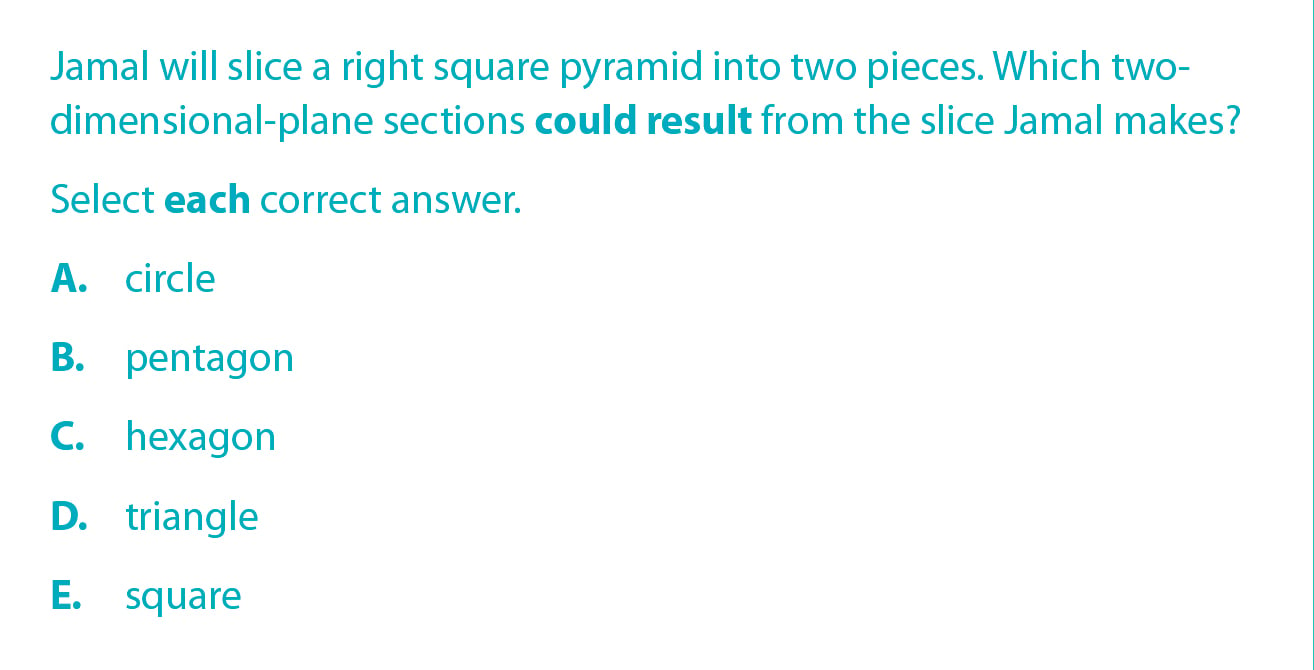
Answer: D, E
Grade 8. While most of the math multiple response items I reviewed for eighth grade did not specify the number of correct responses, this item did.
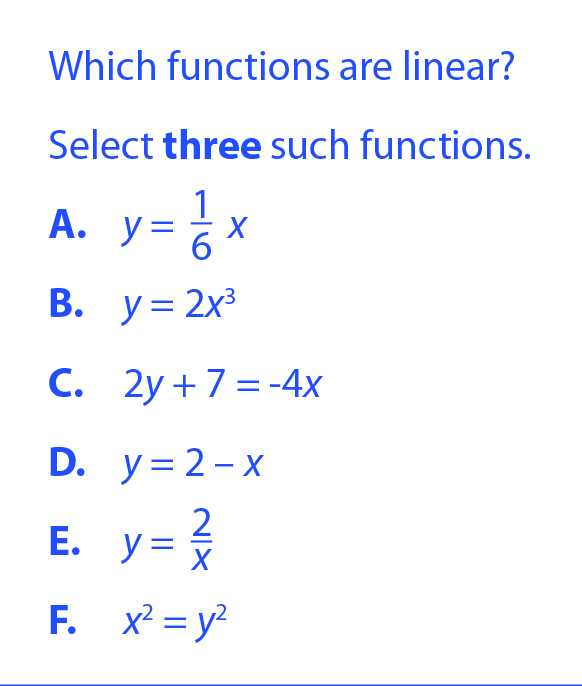
Answer: A, C, D
Finally, there are a variety of ways that math multiple response items can be scored. First, they can be scored as all-or-nothing—the student either gets one point or zero points for selecting all of the correct response and none of the distractors. Alternatively, there can be one point for each correct item chosen by the student and one point for each item not selected by the student. Standardized test items may be scored with either of these methods or some combination of them.
Help students feel prepared to take high-stake assessments this year and review the different types of question formats they may come across on exams.
ADDITIONAL RESOURCE:
|
|



